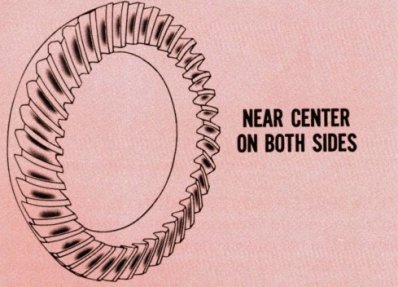moper
Well-Known Member
I wouldn't have let you take that. The pattern sucks, pinion setting gage or not. IMO .010 backlash is a little too much, given the patterns (coast and drive sides) look ugly to me too. If the patterns were great the backlash wouldn;t be much of a concern but there's something that's not quite "there" yet. I would try moving the pinion deeper, and use a little less marking compound when you check it.
















